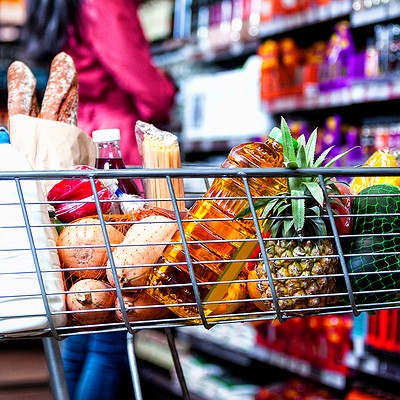I have to start with an apology.
I'm sorry it takes staged events like last week's SNAP Challenge to get us talking about what life is like on the bottom end of the economic slope. I'm also sorry writers like me wail like babies when we are coaxed out of our comfort zones and asked to cope with what Tucson's less-fortunate residents deal with every day.
In my defense, it's challenging eating only $4 worth of food a day—which the Community Food Bank of Southern Arizona challenged citizens to do last week—when you're accustomed to spending that or more on one meal. But thousands of local families receiving SNAP benefits, the modern-day version of food stamps, are doing it right now.
The first day is easy. There are plenty of groceries, and you feel creative using the few ingredients you have. But it grows old when you end up skipping meals due to poor planning or just outright contempt for noodles and butter after eating them too many days in a row.
Which reminds me of the third day of the challenge, when I stood in my kitchen staring at a banana pancake with hatred and dismay. My $20 budget for the five-day work week allowed me to buy a box of pancake mix and some bananas, but I couldn't afford anything to put on top of it. I was sick of the blandness, so I angrily rolled up the pancake and wolfed down as much as I could, chucking the rest to the dog.
This felt shameful and wasteful. After only a few days, I was already tired of it all, and I was feeding my dwindling cache of food to the dog like a spoiled little child.
It was depressing admitting that. I promised to do better. I filled a Tupperware container with beans and rice from the night before and headed out to meet the day.
It was a busy day at work, and people were tired, so they pitched in for a coffee run. I really could have used a cup of coffee that morning, but it wasn't in my budget. So as my co-workers walked around taking little sips, I glowered in non-caffeinated sluggishness. At lunch, people broke out lunch boxes spilling over with fruit and snacks and sodas, or headed to the cafeteria; I hurled myself into a corner and ate my bland little lunch cold, telling myself I should feel lucky for having anything at all.
This cycle repeated itself through the rest of week. I never ran out of food—almost, but not quite—but even being close to the edge gave me a sense of the panic some families feel.
I did it for five days. People thrust into poverty do it with no end in sight. On $4 a day, you can't even afford to have anybody over for dinner. There's an isolating component to it, and the only people who understand the feeling are those who have lived it.
I have lived it, and not just last week. I grew up poor, and during one especially low period, I ended up wandering and homeless. Later, when things got straightened out, I spent years helping feed the homeless at Casa Maria soup kitchen.
So it's not like I've never looked poverty square in the face. I know how to get by on very little, and I know how little many people get by on. But $4, per person, per day, is so close to the line that it's almost criminal. For an adult, it is adequate if you double down on heavy carbohydrates and have the time to make everything from scratch. God help you if you have kids or any other responsibilities.
There is also no way you could feed a family in any sort of nutritious way on this budget. Wonder why obesity is on the rise in poor neighborhoods? Because carbs are cheap, and fresh vegetables are not. Carbs store well; vegetables do not. Frozen, fatty meat is also pretty cheap. You get the picture.
It's good to remember that poverty is on the rise, so some of us could be taking the real SNAP Challenge sooner than we think. If that should happen, I suggest budgeting for things like syrup and spices. You'd be amazed how much things like that mean when you can barely afford them.











